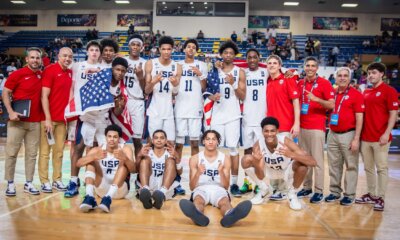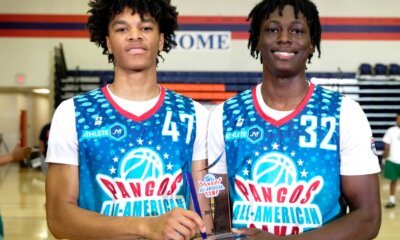
As we all suffer through the election cycle insults of both the republicans and democrats telling us what we do and don’t have, what we do and don’t need and how they’re both going to solve all of our issues, let’s take a moment to acknowledge another wayward legislative happy group and the most recent plank in their platform. I’m talking about the NCAA and the new recruiting calendar.
For those who may have missed the latest forced fed schedule for contacts, evaluations and restocking here’s the big change. July, which was at one point an entire month of evaluations before becoming two ten day periods with a five day break more recently, has now morphed into just two seven day time slots with a ten day break in between. Yes, for those of you doing the math, over time we’ve gone from 31 days to 20 and now somehow have wound up with just 14 days for the summer of 2013. The spring and fall three day non scholastic periods still remain in place. The new annual tally for recruiters is 14 days of non-scholastic evaluation in the summer and 100 days total for all academic year recruiting, including both non (fall and spring) and scholastic.
When the powers that be have approached recruiting legislative changes through the year’s they’ve usually rationalized their tinkering with it being in the “best interest of the athletes”, or to control “outside influences” and lately we’ve seen the “quality of life” standard for coaches applied to many calendar proposals. Hey, despite my perpetual cynical disposition, I am a realist. All of those reasons can and have been legitimate grounds for looking at change but they’re also convenient as smokescreens for ulterior motives. I may be sitting at a keyboard now or working behind the lens of a camera but my roots still lie in the gym. Spending 25 years as a division I recruiting coordinator will do that to you but I have to admit that the steady decline of non-scholastic evaluation opportunities has me wondering just whose and what agenda is being served.
No matter what foundation is provided for legislative proposals the interests of the athletes should always be the first and most stringent filter applied. While six days may not sound like much it removes a tremendous amount of exposure potential for perspective student athletes. There is no way of balancing a recruiting day in the academic year with one from the summer.
Time to crunch some numbers. Realistically there are 11 potential time slots for games on a typical July day of competition if you go on 1:15 intervals. Multiply that by three coaches on the road and you’ve got 33 games in a day and 198 over the six days lost. That’s just from the perspective of an individual program. For the players, multiply that by 336 Division I programs (2011-12) and you’re eliminating 66,528 opportunities for an athlete to be noticed, evaluated or summarily dismissed.
Before my coaching brethren accuse me of ignoring reality like a speaker at one of the political conventions, I’ll be the first to acknowledge that not every program is out on the road every day and not every coach is in the gym every time slot. Those on the upper tiers of Division I competition are much more selective in what events they attend, what games they watch and ultimately who and how many prospects they’ll actually pursue. Other programs still may be limited by financial resources, geographic realities, their current scholarship count and positional needs or, for way too many, the lack of a genuine work ethic. Regardless of the perspective and approach of the recruiters themselves, the fact remains that athletes are losing a considerable chunk of their time on stage in front of a potential scholarship providing audience.
Few, if any, events in the academic year provide the kind of exposure that a non-scholastic tournament does during the July period. Let’s take a shot at some additional math. Take into consideration that the NCAA allows 100 person days for off campus recruiting during the academic year and then begin the “up front” subtraction process.
First off, set aside 18 days for the fall and spring non-scholastic periods (3 coaches X 3 days X 2 periods) and you’re immediately reduced to 82. Before we start setting aside days for competition reasons let’s take care of current senior recruits. For the sake of discussion let’s say you only need to sign three this year. You’ve got seven evaluation (three that can be used as contacts) opportunities per prospect and few recruiters go 100% on commitments so let’s say you actively recruit eight individuals to fill your needs. Again you wouldn’t use all seven on each prospect so let’s do the minimal thing and say three each. There’s another 24 off the top and now you’re down to 58 and still not done with your top targeted recruits. Today’s successful recruiter knows who or what positions they’re going to focus on in the next several classes and are already actively recruiting on that basis. For the sake of discussion let’s say you set aside 12 days for the top players in each of the next two classes. That’s 24 more days and that 100 now has shrunk to 34.
Every program has some “standard” events that they’ll cover annually and days need to be set aside to accommodate those efforts. You’re looking at tip off and Thanksgiving tournaments, Christmas tournaments, Martin Luther King weekend events as well as your own and adjoining state tournaments at the end of the season. We’ll take just a minor hit on this one as many of your targeted recruits will be participating in these events. Subtract 10 (remember every day a coach attends a tournament counts as one person day though the entire event only counts as one evaluation towards the limit on each individual recruit) and you’re now working with two dozen days. Most programs will even have to set aside a few more for “politically correct” (local teams or traditional power programs that may not have recruitable athletes in a given year) appearances in select gyms. So, bottom line, 100 days during the academic year can become 20 or less before the season even tips off. Throw some junior college recruiting in there and you might need to reprioritize your entire recruiting calendar and put new batteries in you calculator.
Naturally there are a lot of variables that can come into play and I’ve taken a very general (but conservative) approach to the numbers. Ultimately the point is that there isn’t much wiggle room left in the academic year recruiting schedule to randomly identify and evaluate new prospects or follow up on athletes that may have previously caught your eye. The freedom and flexibility that the July offers has benefitted a lot of recruits who might not have gotten the same exposure or opportunities if limited to the calendar now on the books. A lot of future signees have been found when recruiters were courtside looking at other teams and prospects.
This past spring and early summer offered up more club events than ever before and the new calendar change may well make that the norm for the future. Emphasis on non-certified events and exposure to recruiting services and media could grow tremendously, especially for the mid-level player hoping to elevate their options or the late bloomers and sleepers hoping to generate some interest. One of the problems with any legislative change, both politically and athletically, is seeing beyond the obvious and recognizing the ripples that a seemingly small change might make in the overall scheme of things. Removing six days from the July calendar won’t overly impact those kids who are going to have their choice of programs and can play at the highest level. However the rest may see their challenge as a steeper hill to climb and some may not get any exposure at all.
Athletes, parents, and club coaches need to start looking right now at those 14 days next July and how to make the most of their time in front of college recruiters. The decisions made in the past may not provide the most effective use of the days in the gym next summer. A lot of events that did not conflict in the past are going to go head to head and sincere thought and consideration will need to be given to which tournament will serve a club and its athletes best. If you’re already in the recruiting process communication with interested schools will be paramount in knowing where they’ll be and in turn letting them know where to see a prospect in action.
Obviously this change doesn’t serve the student athlete. Talk to the recruiters that have to constantly fight tooth and nail to find the athletes that fill their needs and you’ll get the impression that less days wasn’t exactly on their Christmas list either. There’s a target on someone else’s back and shots are being fired at the expense of the folks who deserve it the least. In 2008 we elected a president behind the theme “Change we can believe in”. If the NCAA were running behind that particular sentiment in 2012 it’s a safe bet they would be voted out of office in a landslide.
Mark Lewis is a national evaluator and photographer for Blue Star Basketball as well as the lead columnist for Blue Star Media. Twice ranked as one of the top 25 Division I assistant coaches in the game by the Women's Basketball Coaches Association (WBCA), he logged 25 years of college coaching experience at Memphis State, Cincinnati, Arizona State, Western Kentucky and Washington State. Lewis serves as a member of the prestigious McDonald’s All-American selection committee as well as the Naismith College Player and Coach of the Year committees.

Latest Articles
-


Christopher Lawlor
/ 3 days agoNBPA Top 100 Camp moves venue but the top-notch talent, coaching still shines in South Carolina
ROCK HILL, S.C. — The National Basketball Players Association tipped off its annual elite...
-


Christopher Lawlor
/ 6 days agoUSA defeat Canada in FIBA U16 AmeriCup Final to lift the trophy for ninth time with a perfect mark; Nasir Anderson earns Most Valuable Player
CIUDAD JUAREZ, Mexico – The FIBA U16 AmeriCup 2025 throne has the United States’...
-
Christopher Lawlor
/ 1 week agoSPEARHEADED: Americans crush Brazil by 79 points at FIBA U16 AmeriCup quarterfinals; Marcus Spears Jr. puts up 16 points and 9 rebounds
JUAREZ, Mexico — The USA men passed its first test in the knockout stage...
-


Christopher Lawlor
/ 2 weeks agoSTARS SHINE: Bailey, Costello earn Co-MVPs at 23rd Pangos All-American Camp in Las Vegas; three Santa Margarita (CA) players recognized
LAS VEGAS – The Pangos All-American Camp did not disappoint. For three days the...




